Visited Suzaka City Museum
I heard that the Suzaka City Museum opened on July 17, so I came to Suzaka City.
This museum had been closed from 2018 due to the construction in compliance with the Fire Service Act. This time the construction was completed and the museum was reopened.
I haven’t visited it before, so I can’t compare it with the previous exhibition, but let’s see what kind of exhibition it is.
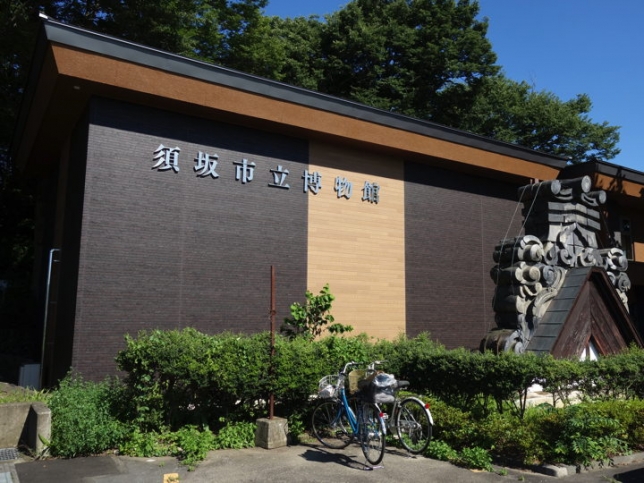
“Onigawara" (a type of roof ornamentation) was exhibited in front of the building. One of the onigawara was exhibited here when Shozenji Temple in the city carried out the re-roofing work (1968). It is said that the whole onigawara weighs 3 tons.
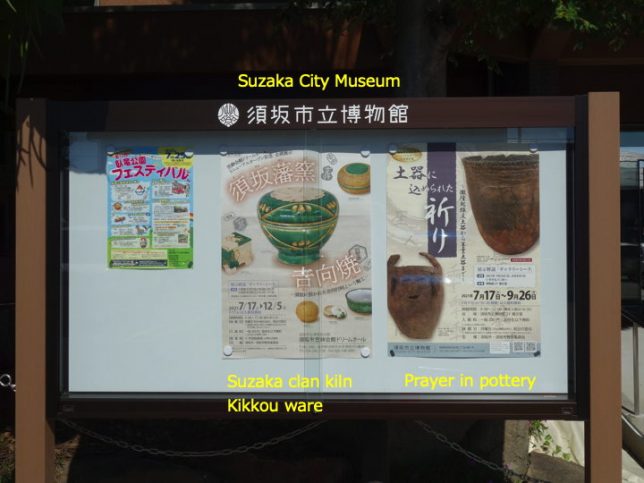
A bulletin board next to the entrance. The poster on the right, “Prayer in Pottery," is the exhibition currently being held here. The center poster “Suzaka Clan Kiln / Kikko ware" is held at the Kasahoko Hall in the annex.
When the museum was closed, Suzaka City established a museum masterplan.
The goal is as follows.
(1) Whole city is a museum
The whole city will be made into a museum by organically connecting museum-related facilities in the city, scattered cultural properties, and interchange facilities.
(2) Function-distributed general museum
In order to realize the whole city museum, Suzaka City links 6 facilities, Suzaka City Museum, Kasahoko Hall, Mayugura Hall, Former Otagiri’s House, Archives, and Warehouse for Preservation and Utilization of Cultural Properties. Clarify the characteristics of each facility, and integrate them as one “general museum".
The location of each facility is as shown on the map.
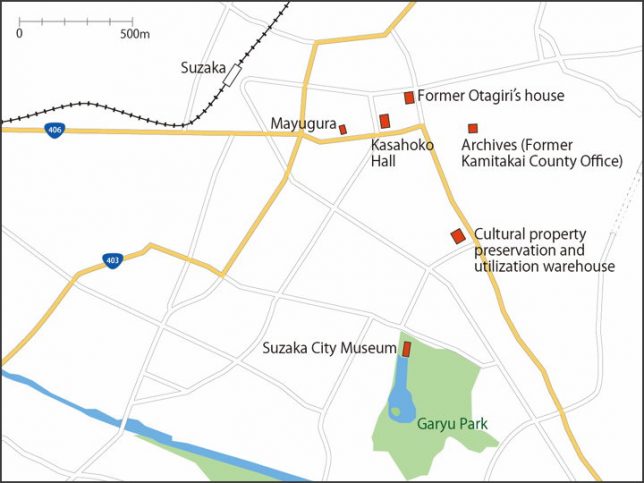
I have summarized the characteristics of each facility.
(1) Suzaka City Museum (main hall + branch)
It is positioned as the main hall where each facility cooperates, and the hall is used as a free space to provide city guidance and references.
The annex is a paid space, and archaeological exhibits from ancient times to the Middle Ages are held. The storage holds materials for buried cultural properties.
(2) Kasahoko Hall (branch museum)
The museum is located in the town where the Hori clan of the Suzaka domain had a mansion in the Edo period, and exhibits mainly materials from the Edo period. In addition, there will be an exhibition of “Kasahoko" used at the annual Gion Festival, floats used as a stage, festivals and traditional performing
I didn’t go on this day, but I have a photo took in the last year, so I will post it. (The exhibition may have changed after the renewal.)
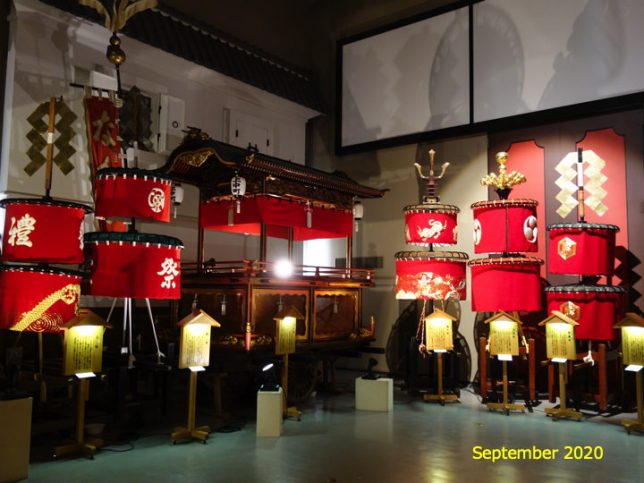
(3) Former Odagiri Family Residence (branch museum)
A building related to Tatsunosuke Otagiri who contributed to the development of the silk industry and the town in Suzaka. The history of the silk reeling industry from the Meiji era to the early Showa era will be exhibited
This is also a picture taken before.
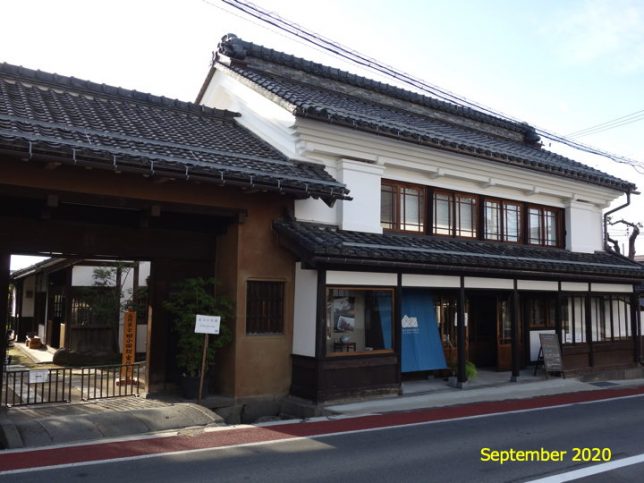
(4) Mayugura Hall (branch museum)
It was built in the Meiji era as a cocoon storage warehouse. The exhibitions related to sericulture and silk reeling will be held.
This is also last year’s photo.
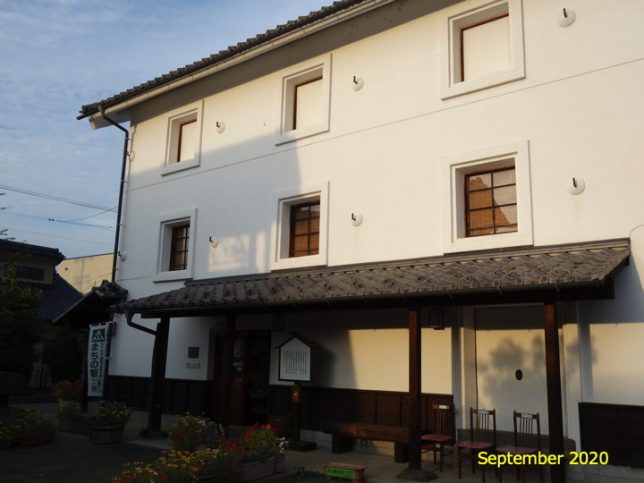
(5) Archive (branch museum)
This facility uses the building of the former Kamitakai County Office. It will collect, store, and research materials such as documents for general use.
(I made a pop-up card for this building before, so I will post a photo of it. Click here for the main site page. )
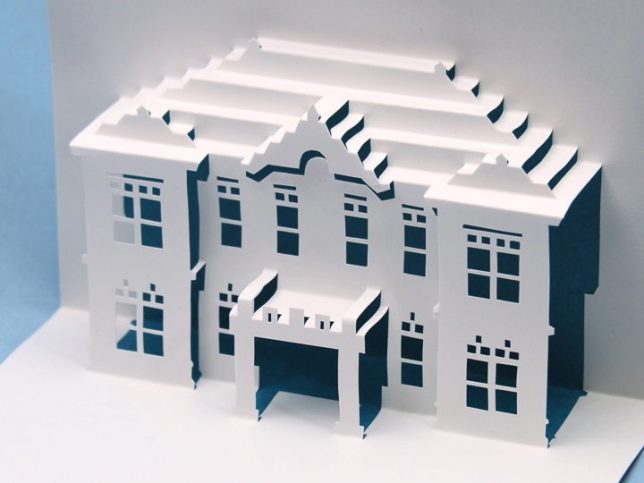
(6) Cultural property preservation and utilization warehouse (branch museum)
It is a storage of materials. But for example, large silk reeling machines that cannot be exhibited at museum facilities may be exhibited and exhibited.
I haven’t visited yet.
This time I just saw the city museum in (1), so I will write about other facilities at another time.
Now, enter the museum.
It’s not an exhibit, but I noticed it. It’s a stained glass on the wall of the stairs. The museum was opened in 1966, so I thought it was made at that time, but it turned out to be much older than that.
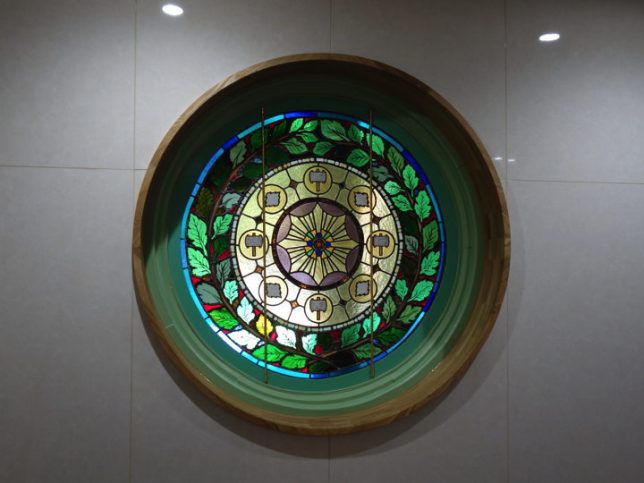
It was originally installed on the wall between the reception room and the office of the Suzaka factory of Okura Silk Reeling Company, and is designated as a tangible cultural property by Suzaka City. Okura Silk Reeling was established in 1913, and the Suzaka Factory was inaugurated in 1918.
On the stained glass, there is a pattern alternating with a picture of a thread frame, the symbol of the silk manufacturing industry. I didn’t know what it meant at first, but it turned out to be the Okura family crest, “Gokai-bishi". Surrounding the design were mulberry leaves. The center seems to be in the shape of the medal awarded by Kihachiro Okura. (Reference : the site of Suzaka City)
Some of the exhibits are prohibited from being photographed, but many can be photographed. In the exhibition room on the second floor, this marks were attached to the things that could be photographed.
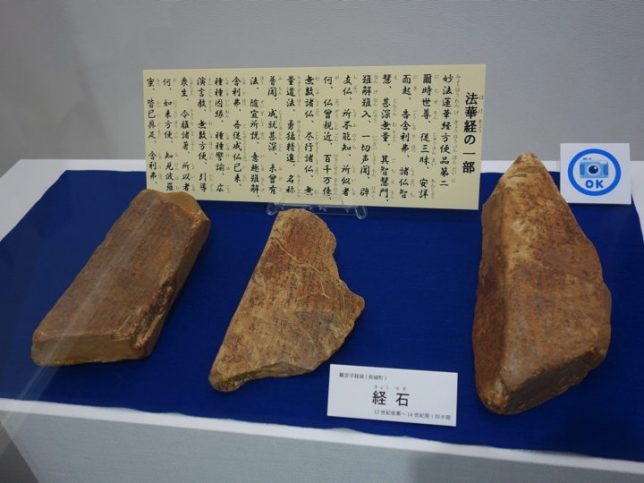
These are the stones with the Lotus Sutra written on it, apparently from the 12th to 14th century. These are not from Suzaka City but excavated in Sakaki Town.
This is an earthenware item with a human face. It was excavated from the Katayama site in Nagano City.
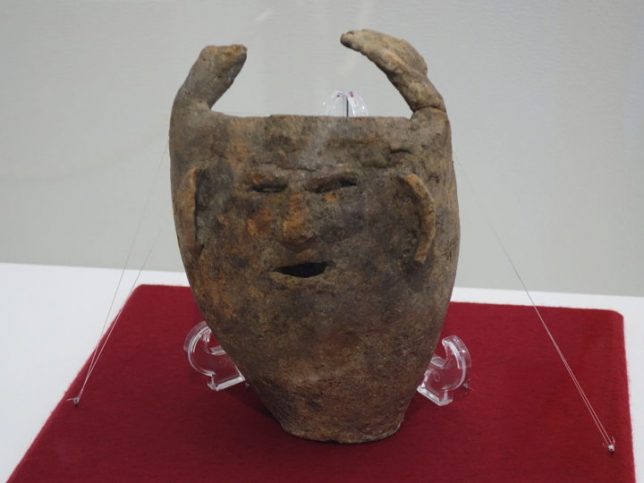
I thought it might represent a crown or an ornament, but it seems to represent a raised hands.
The first floor exhibition room was lined with items excavated from the ruins of Suzaka City.
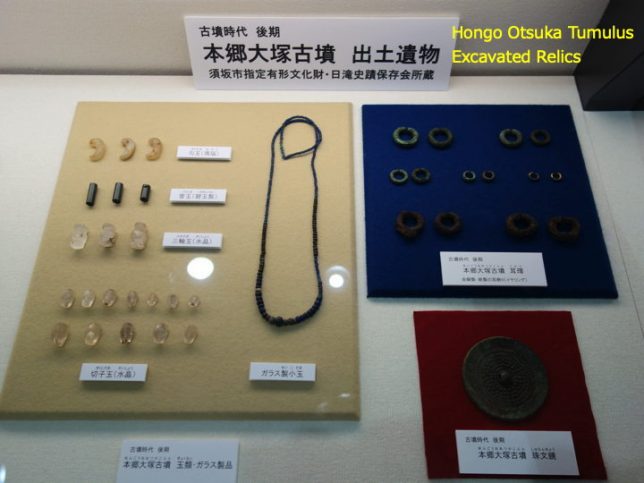
These were excavated from the Hongo-Otsuka burial mound, with magatama, tubular jade, and crystal on the left, and earrings and a mirror on the right.
****
I was planning to go to Kasahoko Hall next, but a flyer I found here changed my destination. (To be continued))
[Reference]
“New Museum Aimed at by Suzaka City: Suzaka City Museum Masterplan," formulated in December 2008 by Suzaka City and Suzaka City Board of Education.
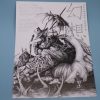
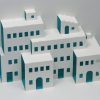
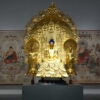
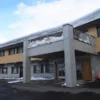
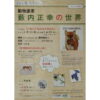
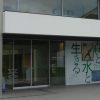
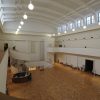
Recent Comments